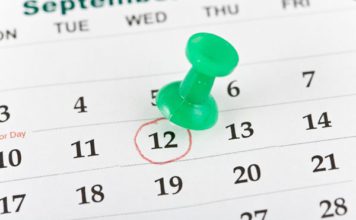Gilroy
– A brief hiccup in the jury room delayed the attempted-murder
case of Leon Martinez, the Salinas man accused of shooting a
Mexican day laborer in Gilroy in order to boost the infamy of
Norteño gangsters.
Gilroy – A brief hiccup in the jury room delayed the attempted-murder case of Leon Martinez, the Salinas man accused of shooting a Mexican day laborer in Gilroy in order to boost the infamy of Norteño gangsters.
The case centers on a drive-up shooting on Aug.1, 2005. Witnesses identified Martinez as the man who drove up to a Forest Street apartment complex, asked three unfamiliar men for directions, then fired at them when they responded in Spanish. Abelino Hernandez, then 22, suffered two gunshot wounds, one to his side and one to his thigh. Police chased down Martinez, pursuing him behind the wheel and on foot, and found him locked in the bathroom of a Gilroy home, unknown to its residents.
Jurors are weighing whether Martinez is guilty of attempted murder, firing from a vehicle to cause great bodily injury, and doing both to benefit a criminal street gang. But their deliberations paused Thursday, when one juror questioned whether feeling empathy “over and above the evidence” might require him to be dismissed.
Juror No. 10 sent a note to Judge Kenneth Shapero just after 4pm Thursday, asking if a juror might be excused “for empathy reasons over and above the evidence” that made it difficult to “come to a decision comfortably.” The note alarmed Scott, who questioned whether the juror could be fair and impartial.
“He’s got to be removed,” Scott told Shapero. “This is strong language.”
Called in to explain, the jury foreperson said the juror wrote the note as the group was coming to “the conclusion.” However, just before the foreperson walked into the courtroom to explain Juror 10’s note, she said, the juror asked her “to make it clear that [the juror who wrote the note] didn’t want to be excused.”
Defense attorney Steve DeFilippis said it sounded like “an 11 to 1 situation, from what the foreperson said.” After excusing the other 11 jurors, Shapero quizzed Juror 10, avoiding specific questions about the jury’s conclusion.
“At the time you wrote the note, were you asking to be excused?” he asked. Juror 10 said no – he was looking for clarification.
“What [was it] you needed clarification of?” Shapero asked.
Juror 10 paused. It was a long pause. He sighed.
“Are you suggesting that your deliberation processes are being affected by empathy toward any or all of the players in this case?” Shapero asked.
The juror asked how sympathy and empathy differed, then explained, “Up until about 40 minutes ago, I was letting a past experience cloud my judgment.” During jury selection, Juror 10 had revealed that a nephew’s stepson was once involved in a Sunnyvale gang. “I realized I have to base my decisions … on the facts entered into evidence.”
After asking Juror 10 whether he could fairly judge the case, and whether he’d tell the judge if emotions overwhelmed him again, Judge Shapero concluded that Juror 10 could remain, and dismissed him for the evening.
Gilroy police called the case a classic gang crime: attacking an innocent, Spanish-speaking “scrap” to raise the profile of Norteños, a group of U.S.-born, English-speaking gangsters who spar with Mexican-born, Spanish-speaking Sureños. Norteños wear red; Sureños, blue. Witnesses said the attacker wore a red cap and red pants, despite the stifling August heat.
During the two-week trial, attorneys have grappled over almost every aspect of the case. DeFilippis questioned whether Martinez really fired the shots, how badly Hernandez was hurt, whether “the gunman – Martinez or not – intended to kill him, and even whether Norteños are a criminal street gang, under the law. Scott called the case “pretty straightforward,” but the arguments have been anything but.
Jurors must decide whether Martinez’ DNA, found in a red stocking cap, his fingerprints, revealed on the gun, and gunshot residue, sprinkling his clothing, are sufficient to prove he shot Hernandez. The day he was shot, Hernandez failed to identify Martinez as the shooter; later, looking at a photo lineup, he picked out Martinez as the culprit. Scott argued that Hernandez was heavily medicated when police first showed him the photos, preventing him from making the identification. In response, DeFilippis questioned whether another person might have been in Martinez’ car, and fired those shots. Other DNA and other fingerprints were also found in that hat, and on that gun, he contended.
“[Martinez] has not been established as the shooter,” DeFilippis argued Tuesday. Moreover, he argued, “The shooter’s got three shots left, but he doesn’t get out and finish him off … He’s at point-blank range, but he doesn’t hit the vital organs … Whoever it was that’s in the truck, didn’t intend to kill.”
In his closing argument, Scott mocked DeFilippis’ suggestion that someone else was in the car. Referencing a Star Trek character, he joked, “There’s as much evidence that Scotty’s beaming the defendant into the car seat, as [there is that] someone else is in that car.”
As for the idea that Martinez wasn’t trying to kill Hernandez, Scott said, “What other reasonable conclusions can you come to? … Is he trying to get his attention? Was there a mosquito on his leg? Was he trying to only wound him, by [missing] the femoral artery on a moving target?”
DeFilippis also suggested that the jury was missing crucial evidence. Two of the three witnesses at the scene didn’t testify, he pointed out, and evidence of other people’s fingerprints on the gun wasn’t shown to the jury. Scott dismissed the suggestion.
“The defense has the same subpoena power as I do” to bring forward witnesses, Scott said. As he concluded his statement, Scott said, “Hold this guy accountable for doing this … This case is crystal-clear.”
Jurors will meet at 9:45am today to continue their deliberations.














